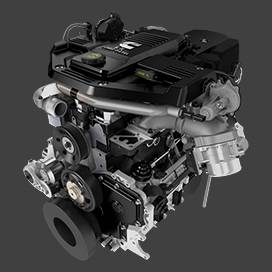Nov . 24, 2024 12:07 Back to list
parts of brake drum
Understanding the Parts of a Brake Drum
When it comes to vehicle safety, the braking system is one of the most critical components. Among the various braking systems used in automobiles, the drum brake system is still common in many vehicles, especially for the rear wheels. Understanding the parts of a brake drum can help in diagnosing issues, performing maintenance, and ensuring the vehicle operates efficiently and safely.
What is a Brake Drum?
A brake drum is a cylindrical component that plays a crucial role in the vehicle's braking system. As the name suggests, it resembles a drum shape and is usually made of cast iron or aluminum, designed to withstand high temperatures and stresses generated during braking. When the brake pedal is pressed, the brake drum works with brake shoes to slow down or stop the vehicle.
Key Components of a Brake Drum
1. Brake Drum This is the primary component of the drum brake system. It rotates along with the wheel and is connected to the axle. The inner surface of the drum is engineered to provide friction against the brake shoes.
2. Brake Shoes These are curved components that press against the inner surface of the brake drum to create friction. When the brake pedal is depressed, the brake shoes expand outward, pressing against the drum and slowing down the vehicle. Brake shoes are typically lined with a friction material, which wears down over time and may need to be replaced periodically.
3. Wheel Cylinder This is a hydraulic component located between the brake shoes. When the brake pedal is pressed, brake fluid is forced into the wheel cylinder, which causes it to push the brake shoes outward against the brake drum. The wheel cylinder is crucial for the mechanical advantage needed to generate sufficient force when braking.
4. Return Springs These springs are essential for the normal functioning of the brake shoes. After the brake pedal is released, the return springs pull the brake shoes back to their original position, away from the brake drum. This ensures that the shoes do not drag on the drum, which could lead to excessive wear and overheating.
parts of brake drum

5. Adjuster Mechanism Over time, as the friction material on the brake shoes wears down, the distance between the shoes and the drum increases. The adjuster mechanism compensates for this wear by automatically adjusting the position of the brake shoes. Some systems require manual adjustment, while others are self-adjusting.
6. Backing Plate This is a metal plate that serves as a mount for the brake shoes and other components. It helps in containing the brake assembly and provides support for the wheel cylinder and return springs.
7. Dust Shield While not present in all systems, a dust shield is sometimes included to protect the braking components from dust, dirt, and moisture. This is important for maintaining the performance and longevity of the braking system.
Maintenance and Importance
Regular maintenance of the brake drum system is vital for vehicle safety. It is essential to inspect the brake shoes for wear, check the condition of the brake drum for scoring or damage, and ensure that the hydraulic system is functioning correctly. Ignoring signs of wear can lead to reduced braking performance, increased stopping distances, and potential brake failure.
In addition, drivers should pay attention to warning signs such as a grinding noise when braking, pulling to one side, or a soft brake pedal, all of which can indicate issues within the brake drum system. Timely inspections and replacements of worn components can prevent more extensive repairs and enhance overall safety.
Conclusion
The brake drum is a vital part of many vehicles' braking systems, featuring several interconnected components that work together to ensure effective braking. Understanding these parts helps drivers recognize the importance of regular inspections and maintenance, which ultimately contributes to driving safety. By maintaining a healthy brake system, one can not only extend the life of the vehicle but also ensure a safe and smooth driving experience. As technology evolves, manufacturers are constantly innovating new braking systems, but the drum brake remains a reliable and effective choice for many applications.
-
Brake Drum Man - High-Quality Drum Brake Drums & Brake Shoes for Reliable Performance
NewsJun.24,2025
-
High-Quality Brake Drum Kamaz – Durable Drum Brake Drum & Brake Shoe Replacement
NewsJun.10,2025
-
High-Quality Brake Drum Liza for Drum Brake Systems - Superior Durability and Performance
NewsJun.10,2025
-
High-Quality Brake Drum Kamaz – Durable Drum Brake Drum & Brake Shoe Solutions
NewsJun.10,2025
-
Durable Kamaz Brake Drums High-Performance Truck Parts
NewsJun.09,2025
-
Premium Brake Drum Maz Kit with Shoes Enhanced Braking
NewsJun.09,2025
